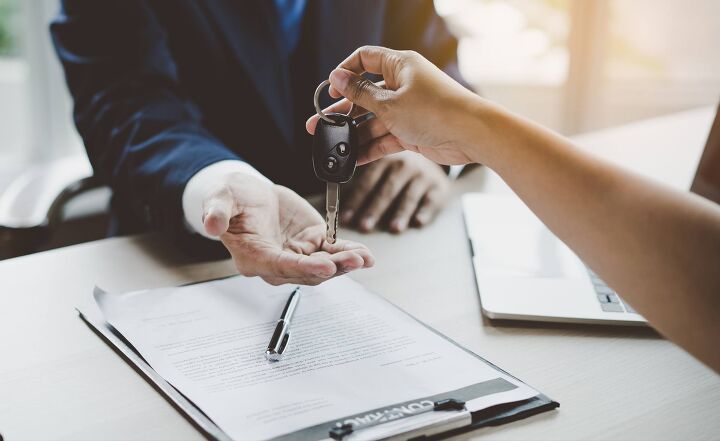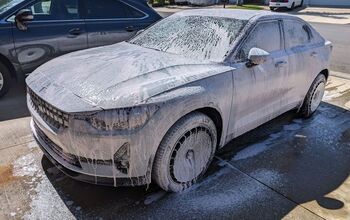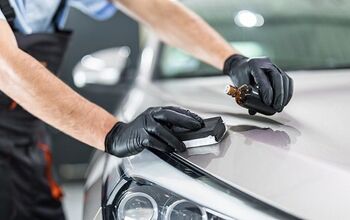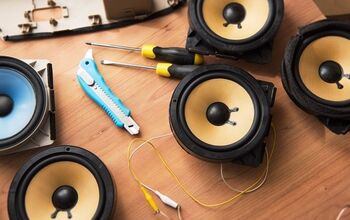Putting a Down Payment on a Car: Everything You Need to Know

Congratulations! You’ve put in the legwork, found a car that checks all the boxes, and settled on a good price. All those items are a task and a half—but there’s still one more topic that needs to be addressed: the down payment.
Fronting some money on a vehicle purchase is usually a good idea, for reasons we will explain. However, as with much in life, there are exceptions; don’t worry, we’ll identify those situations, too. Putting a down payment on a car may not be as intensive a part of the purchasing process as hammering out interest terms, but it is still an important piece of the financial puzzle.
How Much Should You Put Down On a Car?
Making a down payment on that shiny new set of wheels is usually a good idea. With a smaller total amount owing on the car, it’ll take less time for you to be in a position where less money remains on the loan than the vehicle is worth. This is called positive equity, and it is an enviable position.
Common financial advice suggests customers plop 20 percent of a car’s purchase price as a down payment in order to minimize the impact of depreciation. With the average new car price in America now hovering near $40,000, that means following this guidance requires a $8000 down payment. That’s a lot of money, and not everyone has that amount of cash on hand.
An ideal down payment on a car is one that a person can reasonably withdraw from their bank account without nuking one’s entire stash of emergency savings. After all, taking thousands of dollars and putting it down on a car only to be caught short when the refrigerator gives out or the roof leaks is not really ideal.
Broadly speaking, one’s monthly payments will drop by between $15 to $20 per month for every $1000 worth of down payment. There are variables to this equation, such as interest rate and length of term, but it remains a good estimate.
What Is The Average Down Payment On a Car?
According to recent reports from car buying analysts in America, the average new car down payment is in the 12 percent range while the average used car down payment hovers around 10 percent. Since second-hand cars are generally cheaper than new ones, the total dollar amount of the down payment is logically smaller as well.
SEE ALSO: Best Used Cars for Teens, According to Consumer Reports and IIHS
Making a down payment on a car purchase—new or used—can help in multiple ways. As mentioned, it’ll reduce your monthly payment by some measure, which is always a good thing. A reasonable down payment will minimize the impact of depreciation most vehicles experience in the first year or so of ownership; even if the car maintains most of its value, you still pay taxes on the thing which increases the amount you owe versus the machine’s worth. Most importantly, for some folks, a down payment may increase one’s chances of getting a bank loan in the first place.
Wait, what?
Seriously. For shoppers with a low credit score or limited credit history, some lenders may be hesitant to extend credit. Putting a down payment on a car often goes a long way to mitigating the risk of lending you money. It shows you’ve liquidity upon which to draw and, in theory, the ability to plan ahead. Even if those aren’t considerations, lenders always want to maximize their chance of getting repaid, and writing paper (giving a loan) for smaller amounts tends to increase those odds.
There are some limited scenarios in which one may not want to make a down payment at all. If, for some reason, you have the opportunity to invest that same money at a higher rate of return than the depreciation your vehicle will experience in its first couple years of ownership, an argument can be made that it’s better to plow the money into that investment. This is rare, but worth mentioning. We’ll discuss interest rates and the phenomenon of 0 percent loans in the next section.
How Much Is a Down Payment On a Car?
This number varies from shopper to shopper and car to car. A pickup truck costing in excess of $50,000 will have a different set of figures than that beater at the Buy Here Pay Here lot displaying a $5,995 sticker on its window.
However, there are some guidelines to which we can adhere. The figure bandied about earlier in this article suggesting a 20 percent down payment may have its roots in outdated financial advice but remains a sound plan if one can swing throwing down that amount of cash.
Remember that the value of your existing vehicle can also act as a down payment, provided you owe less money on the thing than its current value. In this positive equity situation, the old car’s value can be applied to the new loan, creating a situation in which one is making the equivalent of a down payment without taking money out of their pocket. Owing less on a car than its trade-in value is an ideal situation and, with planning and foresight, can snowball into a very good financial situation.
SEE ALSO: How Car Insurance Premiums are Calculated
Of course, the reverse situation—in which one owes more on their car than it is worth—is a scenario to be avoided like the plague. Being “upside down” is an unenviable position, especially if a customer decides to roll that negative equity into a new loan for another car. In that case, the downward spiral of debt versus value could continue exponentially. It’s a tough spot which could have been avoided by—you guessed it—making a down payment.
We haven’t spoken much in this article about making a down payment on a vehicle lease. That’s because, broadly speaking, you shouldn’t. Leasing a car involves a whole different set of numbers, one in which customers are essentially paying the expected amount a car is going to depreciate over the term of the lease. Making a down payment will surely reduce the monthly payment, sometimes dramatically, but—by and large—if you vehicle is stolen or written off in a crash, that down payment is gone like yesterday’s dinner.
Here’s some more food for thought. Consider the interest rate being offered on the loan you’re getting for the vehicle. If it is a 0 percent offer, you’re saving absolutely nothing in terms of interest by making a large down payment. Making a down payment in this scenario does help offset the initial depreciation, of course, but that means nothing if you’re the type to drive a car until the wheels fall off.
Can I Get My Down Payment Back On a Car?
The safest answer for us to give in this scenario is an outright “no.” However, as with most parts of a car deal, the correct answer is “it depends.” We’ll start with a straightforward example.
Let’s imagine you’ve agreed to make a $1,000 down payment on your new (or new to you) vehicle, with the balance owing on the car financed through a bank or credit union. Once you hand the dealership’s business manager that money—cash, check, or card—it is now theirs as part payment toward the total sum upon which you agreed to pay for the car. Getting it back won’t be easy.
Nor can a customer get the down payment back after they’ve driven off the lot. If you’ve decided to front a large sum, it will have had a large effect on the note’s monthly payments and likely even factored in the bank choosing to approve your loan in the first place. They may have deemed it an acceptable risk to loan you $10,000 but may have taken a dimmer view to loaning you $12,000 for example.
So what happened to the “it depends”? Some customers will make a $500 deposit on a vehicle in order to secure the thing while waiting for a bank to approve their credit. In these instances, it is common for that money to be kept by the dealership and used as a down payment or partial down payment. Many reputable dealers will give the customer back this money if asked or if that stipulation has been made up front, though that means the total amount of your loan will increase by a commensurate amount. There are no free lunches, especially in car sales.
There are always exceptions and, this being the internet, there are surely one or two readers who can supply tales of a twice-removed cousin who got their money back on a sour deal at ABC Motor Shop after a good bit of legal wrangling. That may be so, but we’ll stick to common scenarios for the purpose of this article.
What Else Should I Know About Down Payment On a Car?
Know this as well: some less-than-savory business managers simply don’t want you to plunk down a big down payment on a car. Why? For the same reason they just tried to sell you undercoating and upholstery care products: profit.
With very few exceptions, a car dealership—particularly in a used car scenario—stands to make a bit of extra cash on the deal if they arrange financing through a bank or credit union for their customers. This additional profit commonly takes the form of a bonus paid per loan to the dealer by the bank, sometimes based on the size of the amount financed. If a customer fronts a large down payment, the total amount of the loan will be much smaller than the cost of the car, potentially leaving the dealership with a smaller bonus payment from the bank.
In an industry where most dealerships place a high importance on their own bottom line, the temptation is strong for a business manager to discourage large down payments lest they lose part of this bonus. Also, know that it may be possible for a dealership to reduce the loan’s interest rate a tad by accepting a smaller bonus from the bank—they might give up a $100 bonus by showing the customer a 4 percent interest rate instead of 5 percent, for example. Some people in the automotive the industry refer to this practice as “buying down the rate” and it is completely legal—if a bit unclear to the end consumer. However, that’s another topic for another time.
There is also an argument to be made for the consideration of a product called gap insurance. At the risk of oversimplification, it can offset any difference in value between the amount of money owed on a car and what the insurance company is willing to pay out if the car is wrecked or stolen. Combining this product with a moderate down payment—one you can afford without siphoning too many funds from your emergency savings—is a great way to simultaneously keep a bit of cash in the bank without being “upside down” on your car loan.
Become an AutoGuide insider. Get the latest from the automotive world first by subscribing to our newsletter here.

Living in rural Canada, Matthew has immersed himself in car culture for over 30 years and relishes the thought of a good road trip. A certified gearhead, he enjoys sharing his excitement about cars and is very pleased to contribute at AutoGuide. Matthew is a member of Automotive Journalists Association of Canada (AJAC).
More by Matthew Guy





































Comments
Join the conversation
if I purchase a car for 7549.00 and put down 3000 what is my remaining owed
My question is if you went out of state, to Virginia and bought a used car and put $5500 down financing $10k, can the dealer call tou after 90 days and say the loan did not go through and force you to drop it at an auction house in arizona without giving you your down payment back, or at least a good portion of it?